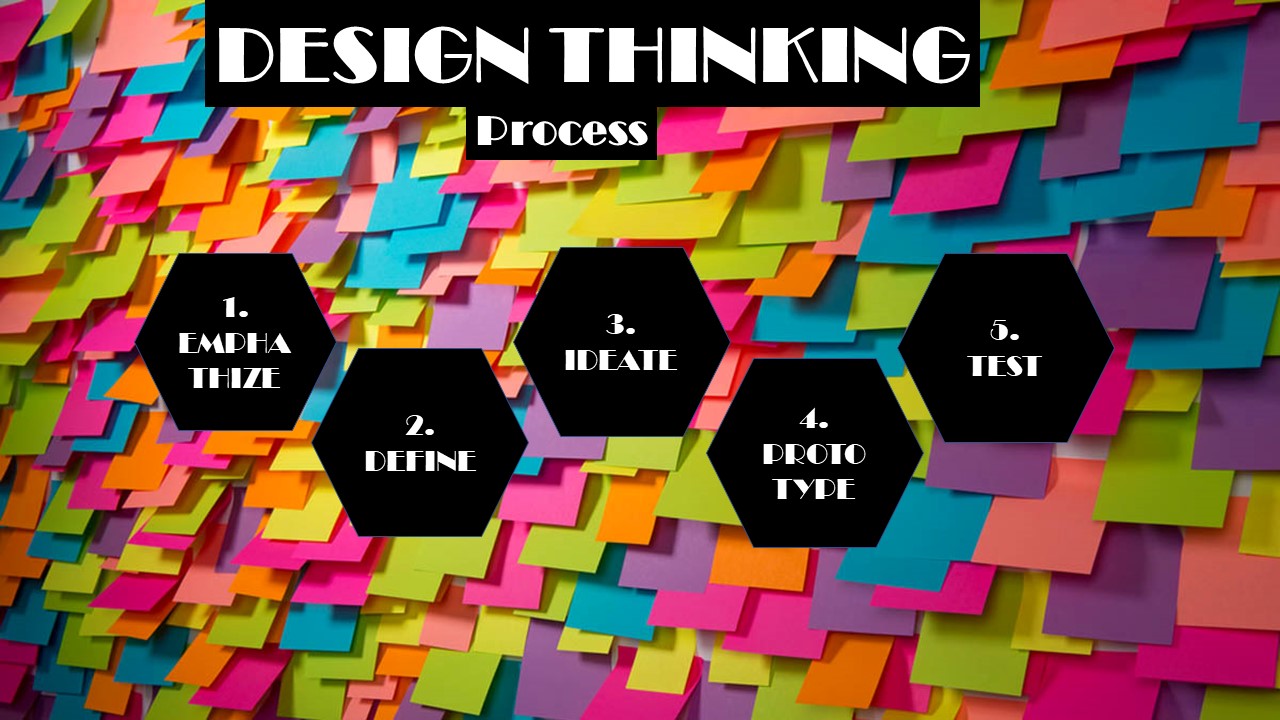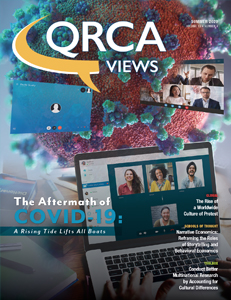
Much is heard about Design Thinking and much is discussed of how we, Qualitative Researchers, can use it in our practises as a problem solution methodology to help our clients maximise the potential of their innovation processes and deliver outstanding results. But what is Design Thinking?
How it works
A method for practical, creative resolution of business problems. It’s a form of collective solution-focused thinking with the intent of producing a constructive future result.
The Design Thinking Process can be synthetized in 5 key steps:
- EMPHATHIZE
- DEFINE
- IDEATE
- PROTOTYPE
- CONSUMER TEST
Qualitative Research is at the heart of Stages 1 and 5.
The first stage of Design Thinking EMPHATHIZE is the foundation of a human-centered design process. It is about understanding the people for whom we are designing and the key stakeholders in the process.
In Qualitative Researchers words, it’s a hands-on exploratory piece of ethnographic research about our consumers.
To empathize, we need to get everyone involved in the process to:
- View consumers and their behavior in the context of their lives.
- Interact with and interview consumers through both scheduled and short ‘intercept’ encounters.
- Experience what our consumers experiences.
Watching what consumers do and how they interact with their environment gives us clues about what they think and feel. It helps us to learn about what they need. By watching people we can capture physical manifestations of their experiences, what they do and say. This will allow us to interpret intangible meaning of those experiences in order to uncover insights. These insights will lead you to the innovative solutions. The best solutions come out of the best insights into human behavior.
But we need to learn to see things “with a fresh set of eyes” – tools for empathy, along with a human-centered mindset, is what gives us those new eyes.
This can be done by sending all team members of the process to conduct in-home ethnographic interviews, interact with consumers in an online ethnographic Study or via observation trip to the key consumption points of our target, getting everyone in the research team spending a day living our consumers lives.
Once we’ve collected all our in-depth observation and in-depth knowledge about our target, we’ll move into Stage 2, which is Define.
In the Define Stage we’ll share, unpack and synthesize the hundreds of findings of the field day into compelling needs and insights which we’ll then translate into problem statements.
It’s a stage of the process where we organise all the information and focus on what’s relevant to our overall business problem.
In practical terms, this will be a half a day session with the key stakeholders in the process, where all Download all the observations and findings from the emphasize phase, synthetize them and convert them into problem statements.
During this stage, we set clear tasks to the workshop participants, by convert all their relevant observations and findings into meaningful post its, one post it per finding, including the source.
We’ll then get everyone to post their many post-its in the wall and present them back to the audience. These post-its will then be groups into relevant themes, to then be translated into problem statements to be solved.
Once problem statements have been prioritized, it’s time to move to the Stage 3 of the process, which is Ideation, the mode of the design process where we aim to generate radical design alternatives. This usually takes about half a day.
Mentally it represents a process of “going wide” in terms of concepts and outcomes—it is a mode of “flaring” rather than “focus.” The goal of ideation is to explore a wide solution space – both a large quantity of ideas and a diversity among those ideas.
From this vast depository of ideas we will build prototypes to test.
We ideate in order to transition from identifying problems into solutions.
Once we have prioritised the best solutions, it’s time to move to Stage 4 of the process – Prototype.
Prototyping is getting ideas and explorations out of your head and into the physical world. A prototype can be anything that takes a physical form – be it a wall of post-it notes, a role-playing activity, a space, an object, an illustration, an interface, or even a storyboard.
Prototypes are most successful when people (the design team, the consumer and others) can experience and interact with them. What we learn from those interactions can help us drive deeper empathy, as well as shape successful solutions.
Once we have strong prototypes developed, it’s then time to do what we, Qualitative Researchers, do so often – test creative solutions.
Considerations
Testing with consumers is a fundamental part of a human-centered design approach. We test with users to refine the solution and also to get deeper understanding of the people for whom we are designing.
When we test prototypes we should consider both their feedback on our solution and use the opportunity to gain more empathy. We are back in a learning and empathy mode when we engage users with a prototype.
 While it may seem counter-intuitive, sometimes conducting research in different countries in an identical manner is NOT the most effective approach!
While it may seem counter-intuitive, sometimes conducting research in different countries in an identical manner is NOT the most effective approach!






